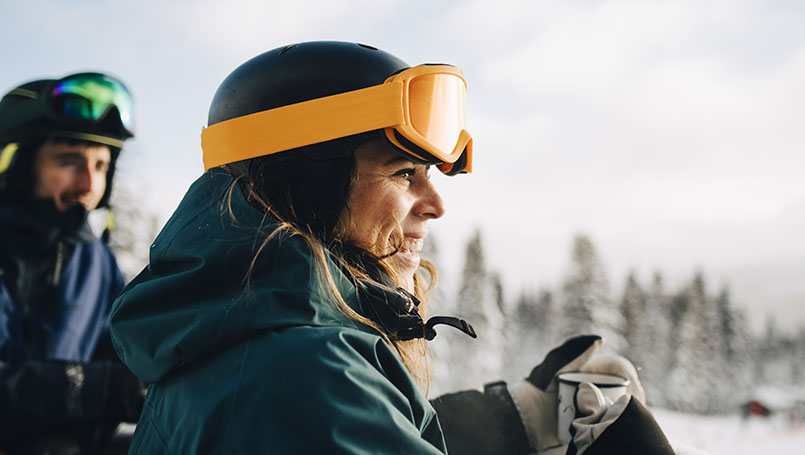Thursday, January 26, 2023

Strengthening your core and leg muscles can help improve maneuverability and posture.
Skiers excited to hit the slopes this winter can do a few things to make their trips downhill more fun—and safer.
Here are tips from Phillip Adler, PhD, licensed athletic trainer with Corewell Health orthopedics.
Core stability
As you are going down the hill, you ask your lower body to help your legs change directions, Dr. Adler said.
“You need to use core strength to maneuver down the hill,” he said. “That’s why I say start with abs and core strength.”
Often, people think of doing crunches to build their core. But Dr. Adler recommends performing a mix of exercises to work your back and the upper, middle and lower abs. And don’t forget about the obliques—the muscles on the sides of your trunk.
One exercise he recommends is a three-way plank.
Starting with a plank on your forearms, shift to a side plank, keeping your hip off the ground.
Hamstring and quads
Strengthening your quad muscles will help you maintain a good posture as you head downhill. And keeping flexibility in the hamstrings also is crucial. If your hamstrings are tight, squatting motions will pull on your lower back.
“Your back is going to get sore pretty quickly as you go downhill,” Dr. Adler said.
Plyometrics
Plyometrics, also known as jump training, is not necessary for a beginner headed to the bunny hill. But it can be useful for experienced skiers preparing to tackle advanced hills, which requires quick shifts in direction.
Dr. Adler recommends plyometric exercises such as 6-inch box jumps, performed in a series of different patterns.
Stretching
On ski day, a few stretches can help prepare your hamstrings and back for the first downhill run of the day.
“There is no need for a massive warmup, like for a soccer game,” Dr. Adler said.
Stretches may be even more helpful after skiing, when your muscles are warm.
“You will have used muscles you have not used much in the past,” he said. “Make sure your muscles are taken care of so you’re not too stiff and sore the next day.”
Pack your sunscreen
Skiers focus on their equipment, and with good reason. Using skis that are the right size can make all the difference in a fun and safe ski trip. And it’s important to dress for the cold weather—but don’t overdress to the point where you end up sweating.
Also, don’t forget to include sunscreen, Dr. Adler said. Your face can get just as sunburned on a snowy mountain as a sunny beach.
